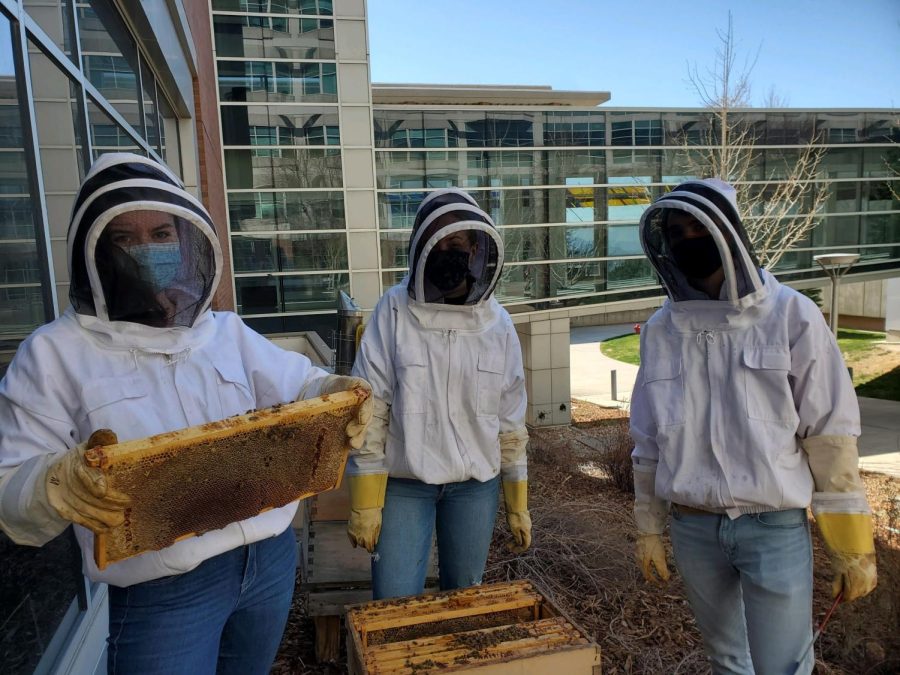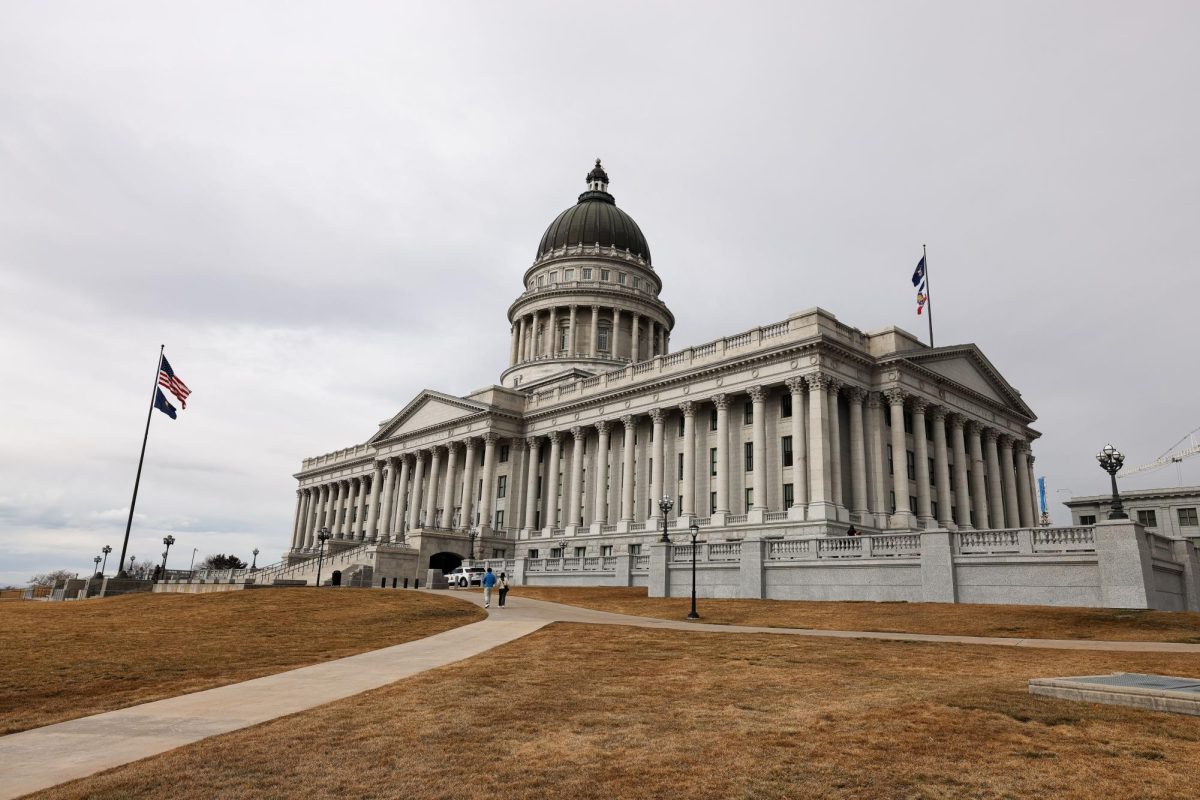The Buzz About the U Beekeepers Association
Members of U of U Beekeepers Association perform a hive inspection at HSEB on the University of Utah campus, Salt Lake City, Utah. (Photo by Natalie Caylor | Courtesy of U of U Beekeepers Association)
December 11, 2021
Utah’s history with the Church of Jesus Christ of Latter-day Saints is where its nickname, the Beehive State, originates. Upon his arrival in what would someday become Salt Lake in July 1847, Brigham Young declared the beehive as a symbol and christened it “Deseret.” To this day, the beehive can be found on road signs, t-shirts and statues around the capital.
In an article published on Oct. 11, 1881, The Deseret News said of the emblem, “the hive and honey bees form our communal coat of arms … It is a significant representation of the industry, harmony, order and frugality of the people, and of the sweet results of their toil, union and intelligent cooperation.”
Beyond the symbolism, Utah is home to over one thousand species of native bees. These pollinators thrive in the desert environment and the diversity of soils attracts a variety of insects. In fact, Utah boasts the title of being the most diverse in bee species, accounting for almost 25% of all bee species found in North America.

Approximately 75% to 95% of all flowering plants on Earth require assistance with pollination. This is where bees, butterflies, bats, birds and more come in. They spread pollen from plant to plant, ensuring that all organisms have the opportunity to reproduce.
According to the U.S. Department of Agriculture, factors such as habitat destruction, pesticide use and the effects of climate change, among others, are decreasing the bee population at large.
On campus, the University of Utah’s Beekeepers Association is committed to educating the student body about bees and protecting these tiny creatures. John Stilley is a senior at the U and vice president of the club.
“We manage three separate sections of hives around campus,” Stilley said. “We’ve got one group of hives at the Marriott Library. We’ve got one group up by the health science building on the upper campus, and we also help manage the hives by the Marriott dorm. So all told, we’ve got about nine hives to manage.”
Stilley said the main goal of the club is to provide a way for people to learn about beekeeping.
“To participate without making the initial investment on all of the equipment and materials that are required,” he said.
Through Instagram, in-person and Zoom events, they reached out to the campus community, hosting events to get engaged and offering information to those with limited knowledge on the subject. While the winter months were slower, the rest of the year was filled with informing the public.
Anika D’Souza, a second year at the U, said in an email interview that the most important thing this club does is educate.
“I think there’s a lot of misconceptions about bees and other pollinators, and the general public really needs to be informed of why these insects are so crucial for our lives and environment,” D’Souza said.
To learn more about the U Beekeepers Association and their programming, visit them online or on Instagram.








